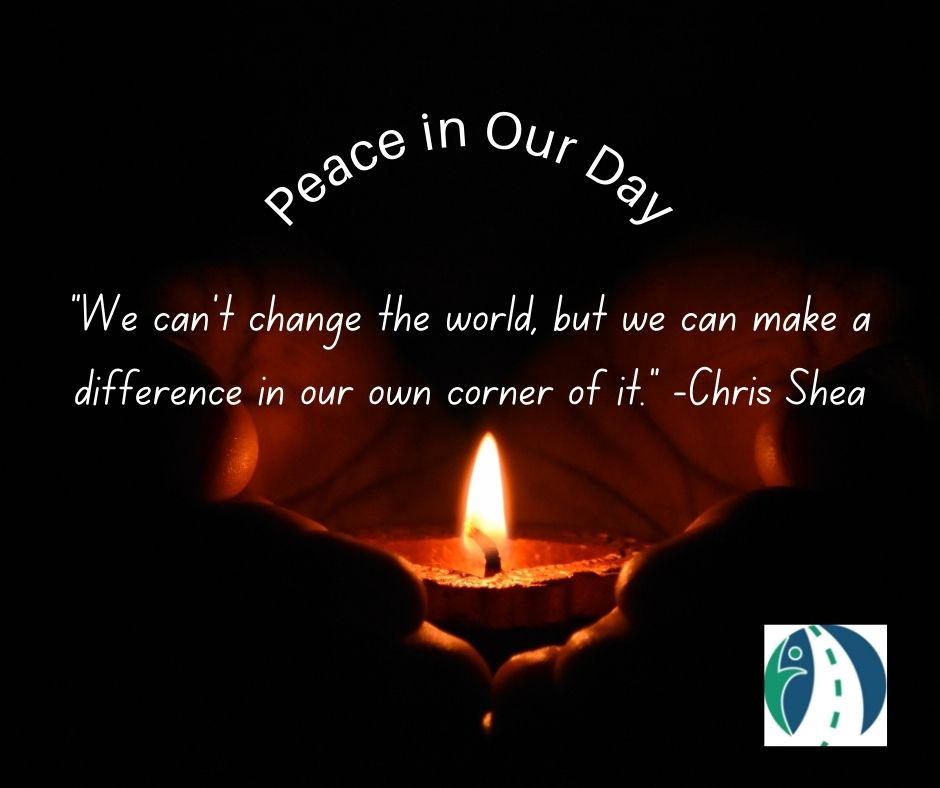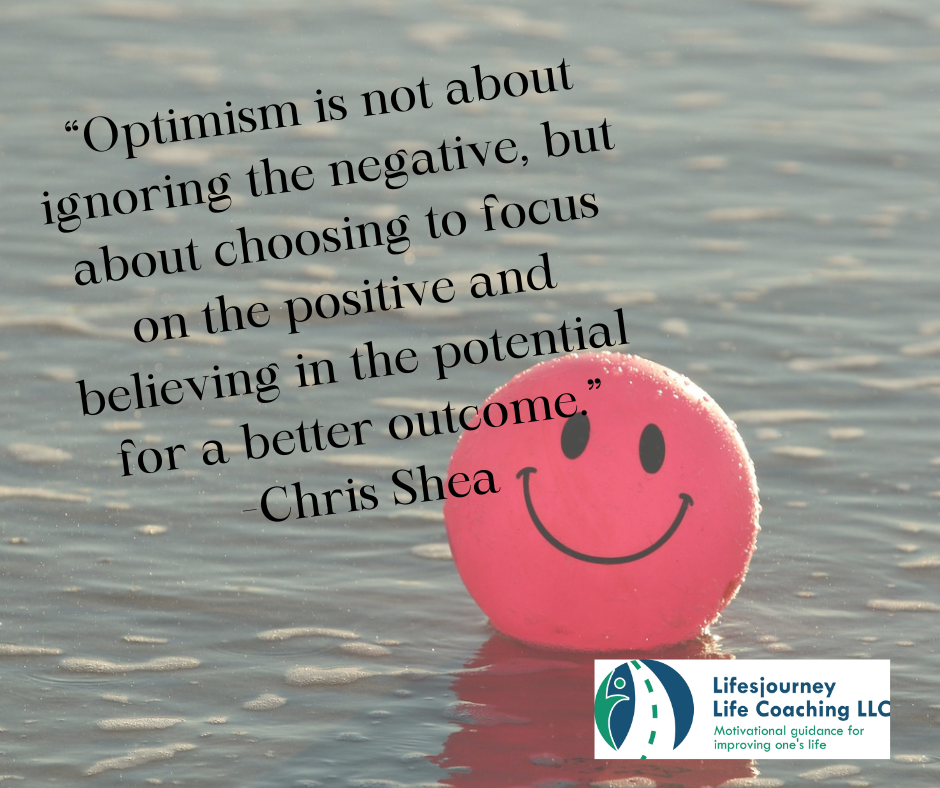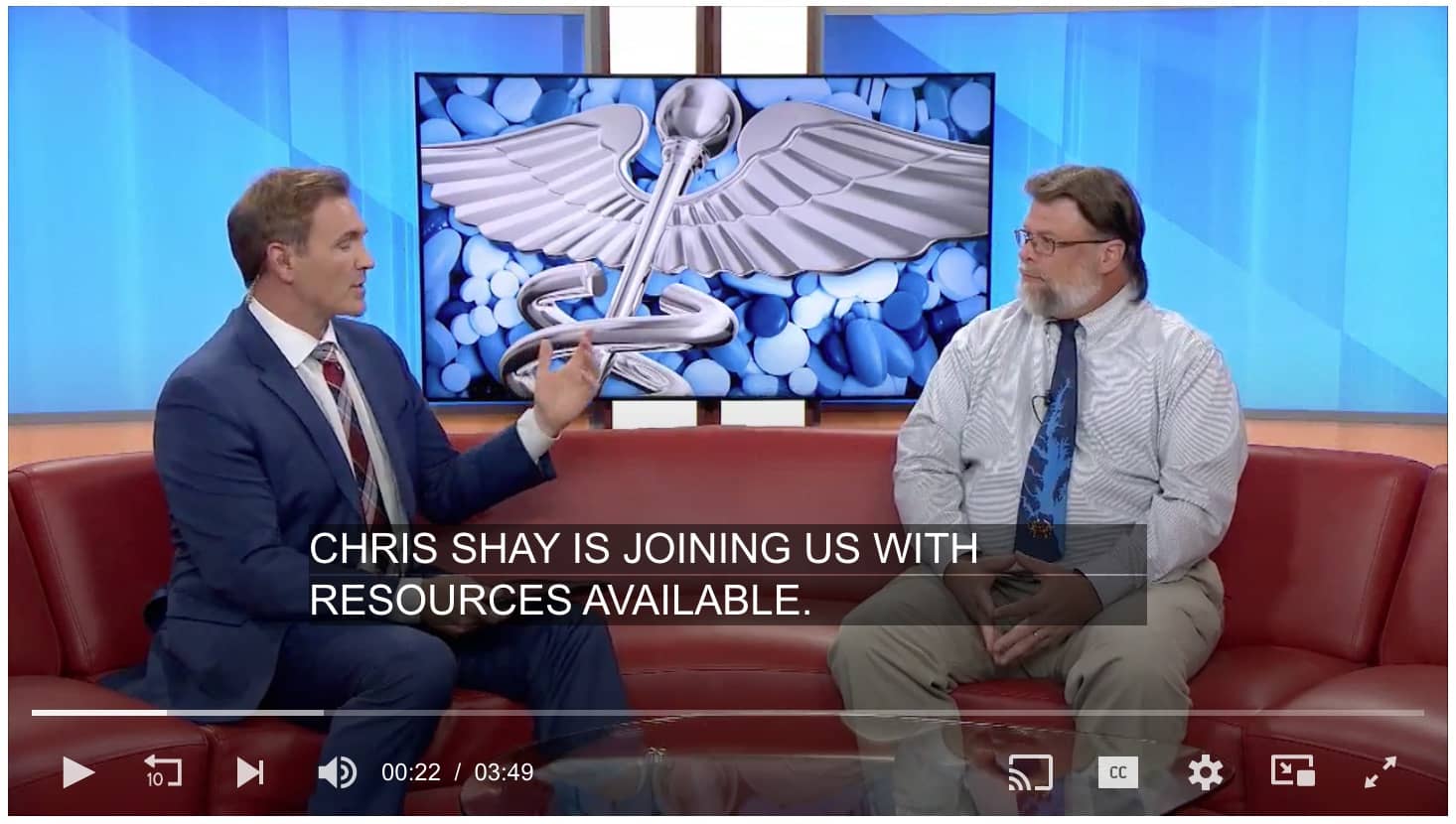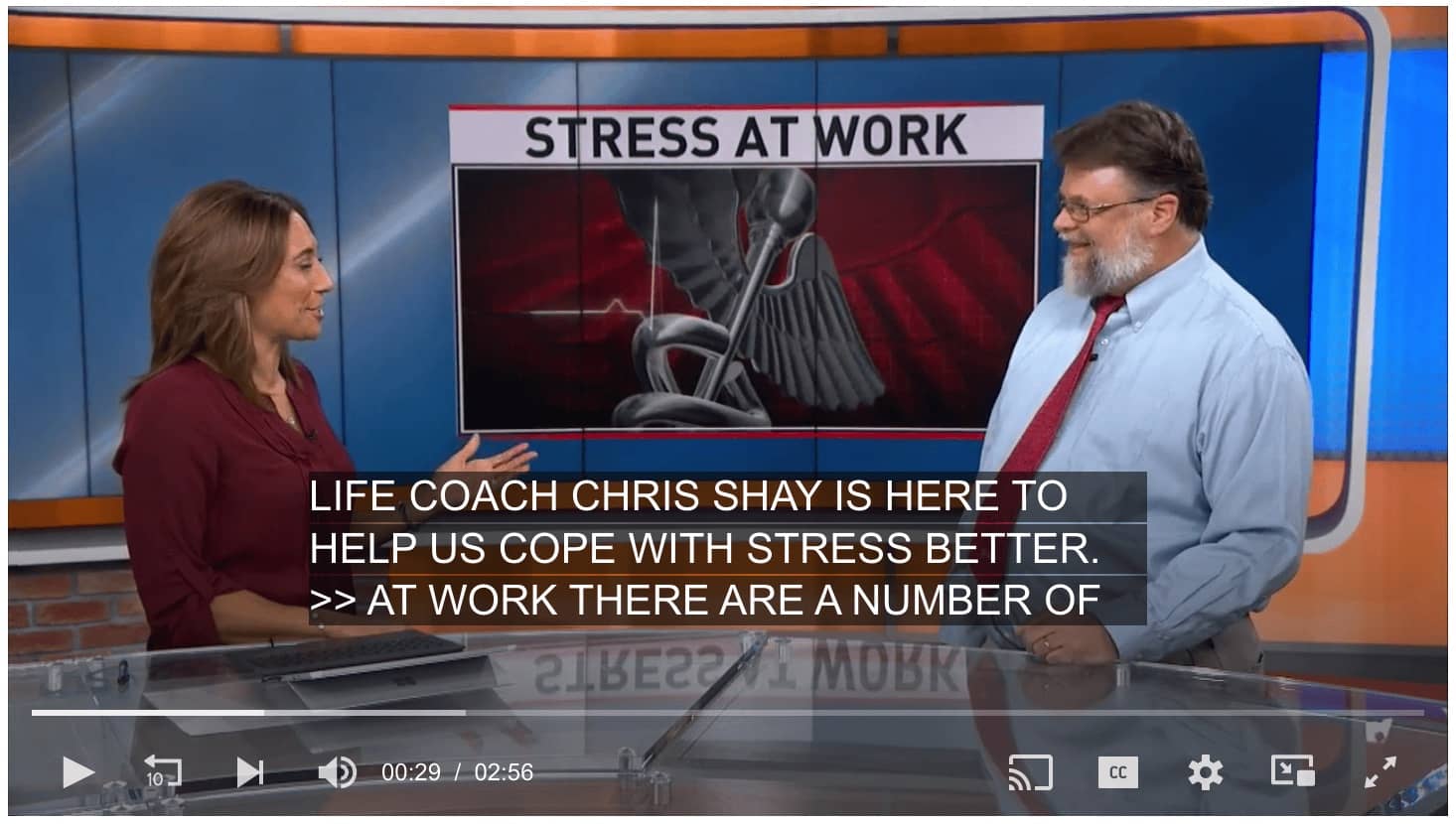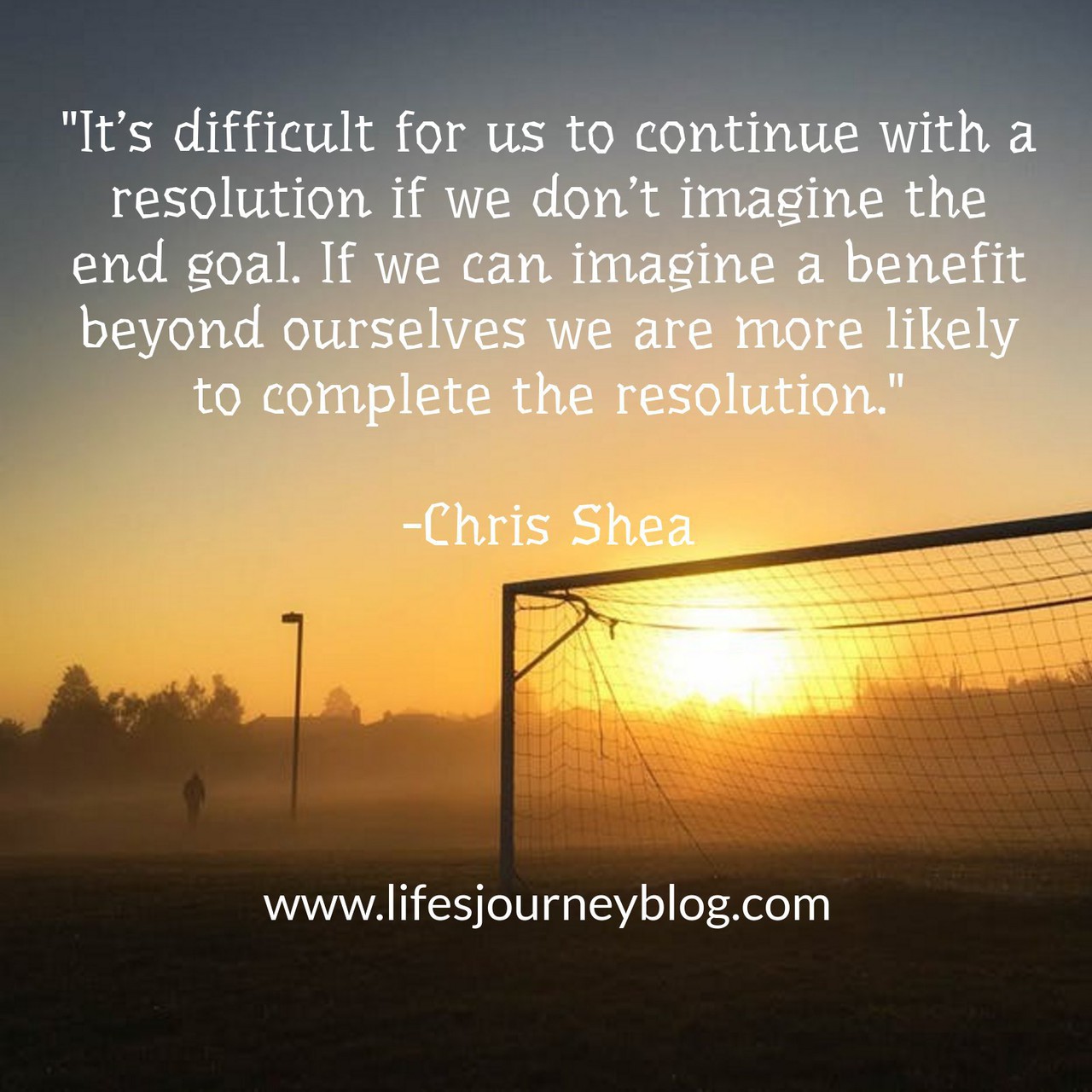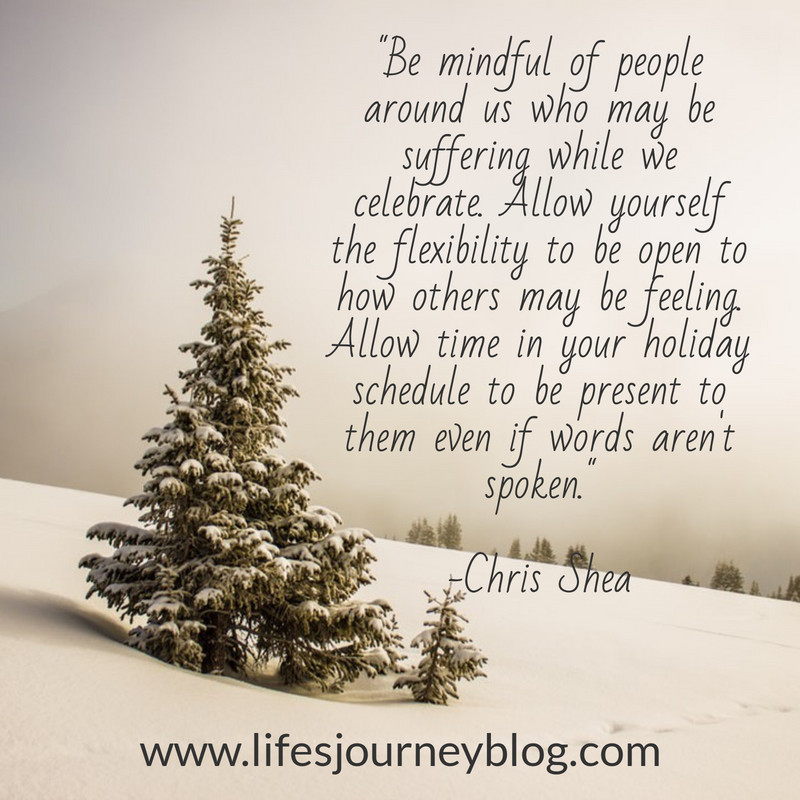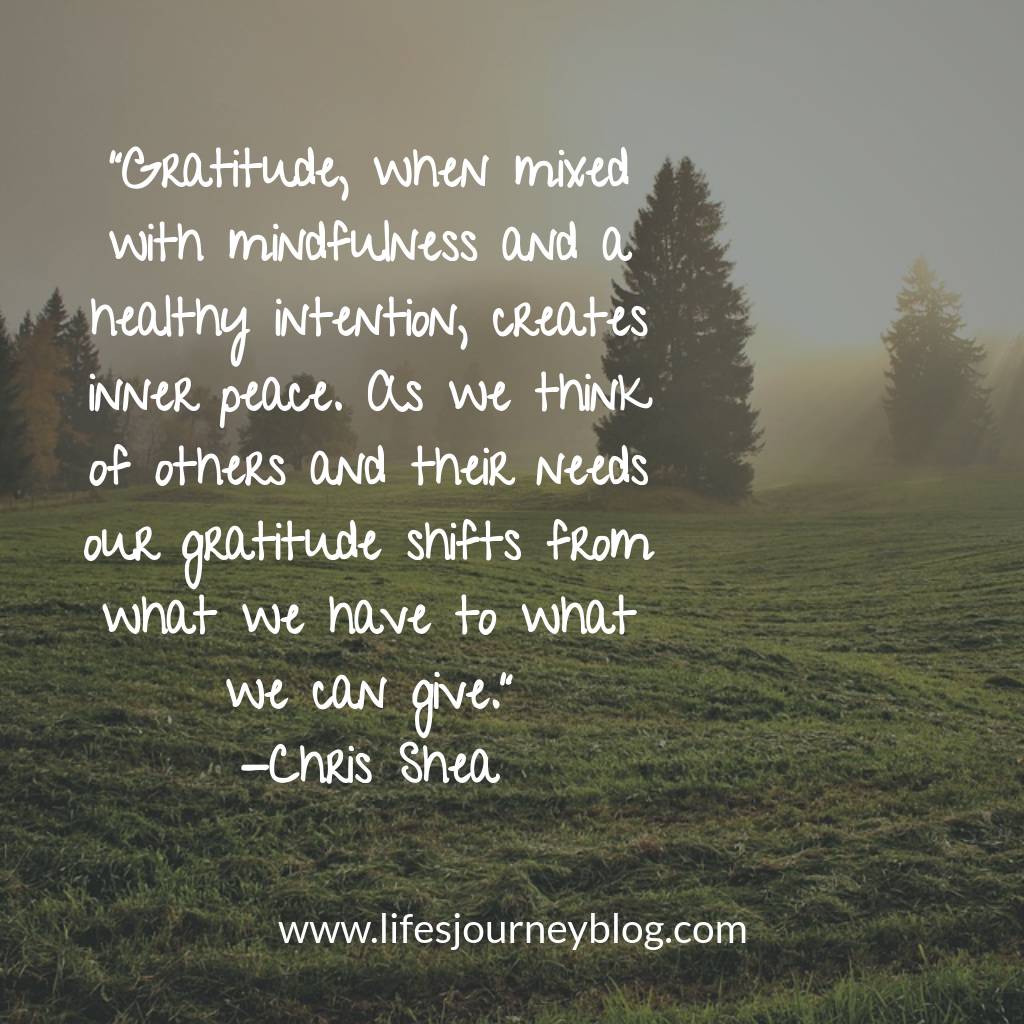Posts by Chris Shea
Your Inner Peace Path: Essential Practices for a Calmer Mind

Inner peace, a state of serenity and calm, can be achieved through practices such as mindfulness meditation and loving-kindness meditation, which focus the mind on the present and foster feelings of love and kindness towards oneself and others. Regular physical activity, including yoga or tai chi, not only enhances mood but also contributes significantly to this tranquil state by reducing stress and increasing self-awareness.
On the journey towards achieving inner peace, one must also consider the importance of a regular sleep schedule, the nurturing of strong social connections, and the practice of gratitude, all of which play a crucial role in cultivating happiness and a sense of calm. Engaging in activities that bring joy, alongside effective time management and seeking professional help when necessary, are essential steps in navigating the path to inner peace.
Understanding Inner Peace
The Nature and Importance of Inner Peace
Inner peace is fundamentally a state where emotional and mental serenity prevails, free from disturbing thoughts, allowing individuals to control their moods and reactions effectively. It transcends mere passivity or indifference; it is an active state of profound presence and engagement with life’s challenges. This state is not exclusive to those dedicated to spiritual or religious practices; it is accessible to anyone, regardless of their lifestyle or occupation.
Misconceptions and Realities
There is a common misconception that inner peace involves disengagement from the world and ignoring personal or external issues. Contrarily, true inner peace involves a deep engagement with the world, maintaining a balance that fosters internal harmony and stability. It is about embracing life’s experiences, acknowledging and addressing suffering, not through indifference but through a mindful and balanced approach.
Inner Peace as a Tool for Life
Achieving inner peace allows individuals to cope with any event or situation, aiding in managing anxieties and fears healthily. It enhances focus, patience, tolerance, and the quality of sleep, and it significantly improves relationships and overall happiness. Techniques such as Transcendental Meditation, mindfulness, and other forms of mental and physical training like yoga and tai chi have been shown to foster this peace.
Benefits Beyond Calm
The pursuit of inner peace offers extensive benefits; it improves physical and mental health, increases emotional intelligence, and enhances one’s ability to enjoy life and maintain energy. It equips individuals with the tools to handle stress healthily and appreciate the present moment, fostering a sense of contentment and well-being that transcends ordinary happiness and situational joys.
Strategies for Achieving Inner Peace
Daily Practices for Cultivating Inner Peace
Mindfulness and Meditation Techniques
- Begin with a daily meditation routine, setting aside 10-20 minutes to focus on your breath or a specific mantra.
- Incorporate mindfulness throughout your day by engaging in activities like mindful eating, walking, or journaling to enhance present-moment awareness.
- Explore various forms of meditation such as guided, mantra, or loving-kindness to find what best suits your needs.
- Practice body scan meditation to release tension and notice bodily sensations from head to toe.
Physical and Mental Health
- Engage in at least 30 minutes of moderate physical activity most days, choosing enjoyable activities like yoga or cycling.
- Ensure a healthy diet rich in fruits, vegetables, whole grains, and lean proteins while limiting processed foods and sugar.
- Aim for 7-9 hours of sleep per night and try to maintain a consistent sleep schedule.
- Regular practice of the 4-7-8 breathing technique can help manage stress and induce relaxation.
Social and Emotional Well-being
- Spend quality time with friends and family or connect with community groups that share your interests.
- Practice gratitude daily by reflecting on what you are thankful for or maintaining a gratitude journal.
- Engage in self-compassion by treating yourself with kindness and understanding, especially during challenging times.
- Commit to regular self-reflection to gain deeper insights into your thoughts, feelings, and behaviors.
Environmental and Lifestyle Adjustments
- Reduce exposure to stressors by setting boundaries with stressful relationships and limiting social media use.
- Surround yourself with nature and elements like plants and water sounds to create a calming environment.
- Participate in creative activities to keep your mind engaged and express your artistic side.
- Practice random acts of kindness to cultivate happiness and a deeper sense of community.
These strategies, when consistently applied, can help individuals navigate their journey towards inner peace, enhancing overall well-being and happiness.
Overcoming Obstacles to Inner Peace
Internal Challenges
1. Emotional and Mental Barriers
Unresolved inner emotions such as anger, jealousy, and high self-created pressure can significantly obstruct the path to inner peace. These emotions often stem from past experiences or unrealistic expectations we set for ourselves and others. Addressing these feelings through professional help or mindfulness practices can lead to better emotional management and inner calm.
2. Psychological Factors
The need for others’ approval, fears about the future, and perfectionist tendencies are common internal factors that disrupt inner peace. These issues can lead to a constant state of dissatisfaction and anxiety, making it difficult to achieve a serene mindset.
External Challenges
1. Societal Pressures
External factors such as a fixed mindset or rigid opinions can also pose significant barriers to achieving inner peace. These often manifest as a resistance to new ideas or an inability to adapt to change, which can create internal conflict and stress.
2. Overcoming Mindfulness Challenges
To effectively overcome challenges related to mindfulness, it is crucial to start with shorter meditation sessions and gradually increase their duration. Patience, practice, and adapting techniques to fit personal needs help in building a sustainable practice. Gently redirecting attention during meditation and exploring any resistance to mindfulness can also enhance the practice.
Strategies to Overcome Obstacles
1. Non-Attachment and Reduction of Over-Caring
Practicing non-attachment and reducing the intensity of care can help manage over-caring, which is often linked to anxiety and anger management issues. By focusing less on controlling every outcome, individuals can experience a significant reduction in stress and an increase in peace.
2. Addressing Fear and Global Concerns
Fears related to global issues like nuclear war or ethical concerns such as harming living beings need to be acknowledged but also put into perspective. Focusing on actionable steps at an individual level can reduce feelings of helplessness and promote a more peaceful state of mind.
By understanding and addressing these internal and external factors, individuals can make significant strides towards achieving and maintaining inner peace, enhancing their overall well-being and happiness.
Conclusion
Embarking on the journey towards inner peace involves embracing practices like mindfulness meditation, loving-kindness meditation, and incorporating physical activity into daily routines. These strategies not only fortify mental and emotional well-being but also enhance one’s ability to navigate life’s challenges with grace and resilience. The transformative power of these practices lies in their ability to foster profound presence, increase self-awareness, and cultivate a state of serenity that strengthens one’s resolve against external pressures and internal turmoil. By consistently applying these methods, individuals genuinely embark on a path that leads to increased contentment, better relationships, and an overall sense of happiness in life.
The pursuit of inner peace is a dynamic journey that benefits immensely from guidance and support. As individuals navigate the complexities of achieving this tranquil state, it becomes essential to recognize when to seek professional assistance.
To further this endeavor, reaching out for expert advice can significantly enhance one’s journey. Call our office (240-587-7854) so we can help guide you along your path of inner peace. By embracing the techniques outlined and considering the implications of inner peace on physical and mental health, individuals can unlock a profound sense of well-being that permeates every aspect of life, thus actualizing their highest potential for peace and happiness.
How To Create A News Consumption Strategy For Mental Peace (version 2)
The Francis Scott Key Bridge Tragedy
Tragedies are an unfortunate part of human life. They have happened since humankind can remember. The difference today versus years ago is the proliferation of global data and awareness of every event everywhere in the world. Are our emotions even capable of coping with the volume of tragedies happening around the globe? Are we over loading our senses with too much tragedy?
Yesterday, March 26, 2024, a bridge spanning the Patapsco River in Baltimore City Maryland, USA collapsed after being struck by a disabled cargo vessel. The bridge, known as the Francis Scott Key Bridge, completely fell into the frigid water, taking with it a group of construction workers filling potholes on the roadway.
I mention this particular tragedy, one of many which occured on March 26 worldwide, since I spent 20 years of my adult life living in the Baltimore metro area. I’ve driven across the bridge, flown over the bridge, and even sailed under it. Those experiences don’t make me unique or special as many people can say the same. But for me, and many of those with similar experiences, this tragedy is not just a news story.
In 2022, ironically in March, I published an article entitled: “How To Create A News Consumption Strategy For Mental Peace”. In light of the Francis Scott Key Bridge tragedy I am reposting that article from 2022 below. If you’re so inclined, also check out my article “Being Hopeful For Mental Peace: Is it possible in Times of Crisis?“.
Inner peace and contentment are possible, no matter what happens in the world around us. Of course, we can’t control everything that goes on, but we can control our own reactions and how we let the news affect us.
Now more than ever, you need to stay informed about what is happening in the world. The news never stops, so you might be exposed to it constantly, whether you are watching a 24-hour news channel, receiving notifications on your phone, or scrolling through Twitter.
When you click on a shocking headline, there is always something new and scary to increase your anxiety, ramp up your stress, and inflame your anger. The toll the constant barrage of news updates has on your mental health is significant.
It is essential to stay informed, but don’t let the news consume us. Instead, find ways to stay positive and focus on the good things in our lives. For example, strengthen our relationships with the people we care about, do things we enjoy, and be kind to others.

We can’t change the world, but we can make a difference in our own corner of it. When reading a news article, take time to recall the information you just read. Write a note about what you just learned and how it is relevant to your daily life.
Yes, it is possible to have inner peace and contentment
To have inner peace and contentment, developing a personal news consumption strategy is vital. Here are a few tips to help get started:
1. Determine what is important to you and focus on the news that matters most.
2. Limit the amount of news you consume each day.
3. Be selective about the sources you rely on.
4. Take some time to reflect on the news you’ve consumed.
5. Be mindful of how the news affects your mood and emotions.
6. Make time for yourself each day, even if it’s just for a few minutes.
Developing a personal news consumption strategy can be challenging, but it’s worth it in the end. Here are some tips for developing a personal news consumption strategy:
1. Decide what news sources you want to rely on and stick to them. This will help you develop a sense of trust in the information you’re getting and make it easier to verify the accuracy of stories.
2. Set aside time each day to read/watch the news. This will help you stay informed without feeling pulled in every direction and allow you to focus on individual stories.
3. Balance your news consumption with other activities. This will help you stay informed without feeling overwhelmed or stressed.
4. Take breaks from the news. This will help you avoid getting stuck in a news cycle and allow you to come back to stories with a fresh viewpoint.
Figuring out your primary sources for news is the first step in creating a personal news consumption strategy. Once you know where to find the news you’re interested in, you can start to think about how much time you want to spend on it each day. It’s essential to be realistic about how much time you have and set boundaries.
You don’t have to consume the news in the same way everyone else does. Instead, you can develop your own strategy that works for you and helps you stay informed without feeling overwhelmed or stressed.
The goal of developing a personal news consumption strategy is to identify the most important topics to you and find the most reliable sources of information for those topics. Remember that not all sources of information are created equal. Some sources are biased, while others are simply inaccurate. Therefore, it is vital to find sources that you can trust to make informed decisions about the issues that are important to you.
Constant news exposure can have adverse effects on our mental health – it’s crucial to find a balance between staying informed and healthy. Make sure to take breaks from the news, and don’t forget to take care of yourself!
If you wish to speak with me regarding stress or anxiety from the news, contact my office at (240) 587-7854, click here to book a session.
Why Are We Lying to Therapist: Understanding the Dynamics

Click here to have the article read to you
Did you know that a study found over 90% of therapy clients are lying to therapist at least once? We often craft narratives that stray from the truth, masking our insecurities, or diminishing our struggles. Such dishonesty might seem benign, yet it hampers the very core of therapeutic work designed for our personal growth. While we may shield ourselves with these half-truths out of fear of judgment or embarrassment, understanding and confronting this dynamic is crucial for genuine healing.
In this article, we explore the delicate threads that entwine our words with secrecy in the therapy room. We’ll examine the common reasons why we might find ourselves saying “I lied to my therapist,” delving into the complexities of shame, the urge to please, and the instinct to avoid pain. Recognizing the role of trust in the therapeutic relationship is fundamental, and throughout this article, we aim to empower you with the courage to embrace truth-telling for a more fulfilling therapeutic experience.
Lying to Therapist
When we step into the therapy room, we carry with us the weight of our stories, the ones we tell ourselves and the ones we share. Yet, the fear of judgment is a towering barrier for many of us, often leading to moments where we find ourselves lying to our therapist. This fear can manifest in various ways:
- Hiding Behind Falsehoods: It’s not uncommon to pretend to agree with the therapist’s suggestions or to deny our insecurities. We might even minimize our suffering, trying to present a more composed version of ourselves. This act of self-censorship stems from a fear of being criticized or feeling embarrassed.
- Coping Mechanisms: For some of us, lying is a familiar coping mechanism. It’s a way to maintain a positive self-image or manage transference and countertransference issues, where feelings towards the therapist or vice versa influence our willingness to be truthful.
- Building Trust: Trust and rapport are cornerstones of the therapeutic relationship. If they are lacking, we might withhold information or lie as a defense mechanism. It’s crucial to remember that therapists are trained to help, not judge. Admitting a lie can be a significant step towards building a stronger connection with your therapist.
Addressing the fear of judgment requires courage and a commitment to honesty, even when it feels uncomfortable. If a technique doesn’t resonate with you, it’s important to be forthright with your therapist. And if the fear of opening up persists, it may be time to consider finding a new therapist with whom you can build a more trusting relationship.
Shame and Vulnerability
In our journey of self-discovery and healing, we often encounter the heavy cloak of shame that can lead to vulnerability in the therapeutic setting. This shame, a potent and sometimes paralyzing emotion, can significantly increase the likelihood of llying to your therapist. It weaves a complex web where outright lies, secrets, or even lies of omission become a shield against exposing our deepest insecurities and perceived flaws.
Here are some insights into the dynamics of shame and vulnerability in therapy:
- Types of Dishonesty: Clients may resort to various forms of dishonesty, such as minimizing facts, offering half-truths, exaggerations, or white lies. These actions are often driven by a fear of judgment, embarrassment, or the instinct to avoid confronting difficult emotions.
- Confidentiality and Repercussions: A common misconception is that being open in therapy could lead to negative repercussions. However, therapist-client confidentiality is designed to protect the things shared in therapy, creating a safe space for honesty and growth.
- The Impact of Lying: While it may seem like a protective mechanism, lying to a therapist can undermine the therapeutic relationship and hinder progress. It’s important to foster an environment where clients feel safe to be vulnerable and truthful.
To counteract the effects of shame, developing self-compassion is crucial. It allows clients to accept their experiences without self-judgment, promoting honesty in therapy sessions. Counselors play a pivotal role by understanding the impact of shame and guiding clients towards acceptance and self-compassion, which are essential for a truthful and healing therapeutic relationship.
Desire to Please the Therapist
In our quest for self-improvement and healing, we sometimes find ourselves wanting to present our best selves, even to those who are there to help us without judgment. This desire can lead us to say things that aren’t entirely true, as we navigate the vulnerable space of a therapist’s office. Here’s a closer look at why the need to please might lead us to be less than honest, and how we can move past this to foster a more effective therapeutic relationship.
- Seeking Approval: We may find ourselves lying to our therapist to avoid disapproval or to gain their approval. This could be due to an ingrained need to protect our ego, avoid conflict, or simply a misunderstanding of the therapeutic process.
- Addressing the Issue: To overcome the urge to please, we can:
-
- Acknowledge our shame and pinpoint where it surfaces in our body.
- Practice self-compassion to quiet these feelings of inadequacy.
- Embrace the courage to speak our truth, even when it feels daunting.
- Provide our therapists with honest feedback, which can foster closeness and make it easier to maintain honesty moving forward.
- Understanding the Consequences: It’s important to recognize that deception, even with good intentions, can have dire consequences. In high-risk populations, such as those who have experienced trauma or those dealing with suicidal ideation, not sharing the full picture can mean missing critical information necessary for survival. Therapists are equipped to handle these truths and are there to build a trusting, honest relationship with their clients, ensuring they receive the support they need.
Avoiding Painful Emotions
Avoiding painful emotions is a common reason we might find ourselves lying to our therapist. It’s a protective mechanism, shielding us from having to confront the discomfort that comes with vulnerability. Yet, this avoidance can lead to a host of negative outcomes, such as:
- Missed Opportunities for Growth: By not fully disclosing our feelings or the intensity of our experiences, we miss the chance to delve deep into the root of our issues, stalling our personal development.
- Strained Therapeutic Relationship: Therapists rely on honesty to provide effective guidance. When we say things like “I’m fine” or “I’ve never experienced that before,” we prevent them from understanding our true state, which can strain the relationship.
- Prolonged Suffering: “I’m taking my medication as prescribed” might seem like a harmless lie, but it can lead to prolonged suffering by preventing necessary adjustments in our treatment plan.
Research indicates that a staggering 93% of people lie at least once during therapy. The lies can range from small omissions to significant fabrications, such as hiding romantic feelings towards the therapist. While therapists may not always detect these falsehoods, the lies can lead to hindered personal growth and less authentic relationships, both within and outside the therapy room.
To foster a more effective therapeutic process, it’s important to:
- Cultivate Open Communication: Be honest about your feelings and fears. This honesty not only helps your therapist to assist you more effectively but also encourages you to practice open communication in other areas of your life.
- Build a Comfortable Relationship: Take the time to find a therapist with whom you feel comfortable and who listens to you, as this is foundational for developing trust and being vulnerable in therapy.
- Reflect on the Purpose of Therapy: Remember that therapy is a space for healing and growth, not for judgment or punishment. Embracing this can help reduce the impulse to hide behind lies.
By addressing the reasons behind our dishonesty and working towards a more truthful dialogue, we pave the way for more authentic relationships and a more fulfilling life.
Misunderstanding Therapy’s Purpose
In our therapeutic journeys, we sometimes find ourselves grappling with the true purpose of therapy, which can inadvertently lead us to be less than truthful. A fundamental misunderstanding of why we’re there—to foster self-awareness and growth—can result in a range of deceptive behaviors. Here’s a closer look at the dynamics at play:
- Navigating the Therapeutic Relationship: Many of us may not fully understand that the cornerstone of therapy is a candid relationship with our therapist. When we misunderstand therapy’s purpose, we might minimize our problems or withhold certain truths, not realizing that this hinders our progress.
- The Spectrum of Deception: The act of lying to a therapist can manifest in various ways, including:
-
- Minimizing issues to appear more stable or in control.
- Omitting details that we fear may lead to judgment or discomfort.
- Altering the narrative to avoid revealing our true selves due to fear of punishment, a desire for autonomy, or for secondary gains like sympathy or extended sessions.
- Subtle Cues of Dishonesty: Therapists are trained to pick up on subtle indications of deception, such as changes in voice pitch or speech rate, which can signal that a client might not be fully forthcoming. Recognizing these signs can help therapists address the underlying issues that lead to dishonesty.
To foster an environment of trust and openness, it’s crucial to set a tone of tolerance and workability within the therapeutic space. Managing lying in therapy involves complex, individualized decisions—but the goal remains the same: to nurture a relationship where honesty is the foundation, allowing for true healing and growth. This approach not only benefits the therapeutic process but also sets a precedent for how we interact in our personal relationships outside of therapy.
Lack of Trust in The Therapeutic Relationship
In the delicate fabric of the therapeutic relationship, trust is the thread that holds everything together. When this trust is compromised, particularly by deceit from the therapist, the effects can be detrimental. Here’s why honesty is paramount in therapy and how clients can navigate trust issues:
- Therapist’s Honesty: Therapists must uphold a standard of honesty, being truthful, and consistent in their interactions. Evasion or deflection can quickly erode the trust that is essential for progress in therapy. If you, as a client, sense any dishonesty, it’s imperative to address these trust issues openly to resolve them and maintain the integrity of your therapeutic journey.
- Navigating Power Dynamics: The power differential in the therapist-client relationship means that any lying by therapists is not only disrespectful but manipulative. It takes advantage of a client’s vulnerability. If you find yourself questioning your therapist’s honesty or feel that lying is a deal-breaker, it may be time to seek a new therapist who aligns better with your values of openness and integrity.
- Clients’ Self-Protection: Often, clients lie as a coping strategy to shield themselves from shame. Therapists should work to help clients understand their reasons for lying and suggest experiments for more flexible interaction. It’s about creating a space where clients can discuss their dishonesty without fear of rejection, understanding that lying doesn’t destroy therapy—itis the therapy. It’s a chance to learn new ways of interacting and to experience the unconditional care that they are often seeking.
Conclusion
Over the course of this article, we’ve unveiled the complex motivations that can lead individuals to conceal the full truth within the therapeutic setting. From the fear of judgment and the pressure to please, to the avoidance of painful emotions and a lack of trust, each factor plays a crucial role in the intricate dance of honesty and deceit. These dynamics not only hinder the therapeutic process but also impede our own potential for growth and self-discovery.
Acknowledging these barriers is the first step toward cultivating a therapeutic environment steeped in trust and openness. As we move forward, let us strive to embrace vulnerability and truth-telling within our sessions. Such courage lays the groundwork for genuine healing and paves the way for a more profound understanding of ourselves and the world around us.
If you’re ready to explore life coaching, I would be honored to help. You can read more about my practice or call/text me directly at 240-587-7854.
Optimism: Develop Your Positive Outlook to Achieve Your Goals
As an optimist, I’ve always believed in the power of positive thinking. It’s not just about seeing the glass as half full, but about embracing an optimistic language that can truly transform your attitude and outlook on life. In this article, we’ll delve into the understanding of optimism and its impact, the benefits of being an optimistic person, techniques for maintaining an optimistic outlook, scientific insights into optimism, and practical tips for incorporating optimism into your life. By the end of this read, you’ll be equipped with the knowledge and tools to infuse your life with the magic of optimistic language.
Understanding Optimism and Its Impact
Optimism is more than just a disposition; it’s a way of life. It’s about approaching life with a positive outlook, even in the face of challenges and setbacks. Being an optimistic person means believing that good things will happen, even when faced with adversity. It’s not about ignoring the negative, but about choosing to focus on the positive and believing in the potential for a better outcome. In a previous article I focused on optimism in light of all the negative news. Read that article here.
The impact of optimism on our lives is profound. Studies have shown that optimistic individuals tend to have better physical and mental health, stronger relationships, and greater overall well-being. When we embrace an optimistic mindset, we’re better equipped to navigate life’s ups and downs with resilience and grace. It’s not just about feeling good in the moment; it’s about setting the stage for a brighter and more fulfilling future.
The Power of Optimistic Language
Language is a powerful tool, and the words we use have the ability to shape our thoughts and experiences. Optimistic language goes beyond just positive affirmations; it’s about framing our experiences and interactions in a way that empowers and uplifts us. By consciously choosing optimistic language, we can reframe our thoughts and beliefs, leading to a more positive and hopeful outlook on life.
When we speak with optimistic language, we’re not just influencing our own mindset, but also the mindset of those around us. Our words have the power to inspire and encourage others, creating a ripple effect of positivity and hope. Whether we’re communicating with friends, family, or colleagues, the language we use can have a profound impact on the energy and atmosphere of our interactions.
Benefits of Being an Optimistic Person
Embracing optimism comes with a wide range of benefits that extend far beyond just feeling good in the moment. Optimistic individuals tend to experience lower levels of stress, better physical health, and improved overall well-being. When we approach life with a positive outlook, we’re better able to cope with challenges, bounce back from setbacks, and maintain a sense of hope and resilience.
In addition to the physical and mental health benefits, optimism also has a profound impact on our relationships and social interactions. Optimistic individuals tend to be more approachable, empathetic, and supportive, leading to deeper and more fulfilling connections with others. By embodying optimism, we not only enhance our own lives but also contribute to a more positive and uplifting social environment.
Cultivating an Optimistic Mindset
Cultivating an optimistic mindset is a journey that requires intention and practice. It starts with a conscious decision to approach life with a positive outlook and a belief in the potential for good things to unfold. One powerful way to cultivate an optimistic mindset is through the practice of gratitude. By focusing on the things we’re grateful for, we can shift our perspective and train our minds to see the beauty and abundance in our lives.
Another key aspect of cultivating an optimistic mindset is learning to reframe challenges as opportunities for growth. Instead of seeing obstacles as roadblocks, we can choose to view them as stepping stones that lead us toward greater resilience and wisdom. By reframing our experiences in this way, we can infuse our lives with a sense of hope and possibility, even in the face of adversity.
Optimistic Language in Daily Communication
Incorporating optimistic language into our daily communication is a powerful way to infuse our interactions with positivity and hope. Whether we’re speaking with friends, family, colleagues, or even strangers, the words we use have the power to uplift and inspire. One simple yet potent technique for incorporating optimistic language is through the use of affirmations.
Affirmations are positive statements that we can repeat to ourselves to reinforce optimistic beliefs and attitudes. By integrating affirmations into our daily routine, we can reprogram our subconscious mind and create a more optimistic and empowering inner dialogue. Whether it’s “I am capable of overcoming any challenge” or “I attract positivity and abundance into my life,” affirmations can be a potent tool for shaping our mindset and language.
Techniques for Maintaining an Optimistic Outlook
Maintaining an optimistic outlook is not always easy, especially in the face of adversity and uncertainty. However, there are several techniques that we can use to cultivate and sustain optimism in our lives. One powerful technique is the practice of visualization. By visualizing our desired outcomes and experiences, we can create a sense of hope and possibility that fuels our optimism.
Another effective technique for maintaining an optimistic outlook is the practice of mindfulness. By staying present in the moment and cultivating awareness of our thoughts and emotions, we can prevent negativity from taking root and maintain a sense of optimism even in challenging circumstances. Mindfulness allows us to observe our thoughts without judgment and choose a more optimistic and empowering perspective.
Scientific Insights into Optimism
The power of optimism isn’t just a philosophical concept; it’s backed by scientific research and evidence. Studies have shown that optimism is associated with better physical health, including a reduced risk of chronic diseases and a faster recovery from illness. Optimistic individuals also tend to exhibit lower levels of stress and anxiety, leading to improved mental health and well-being.
From a neuroscientific perspective, optimism has been linked to changes in brain function and structure. Studies have demonstrated that optimistic individuals show greater activity in brain regions associated with reward processing and emotional regulation. This suggests that optimism is not just a state of mind but also a neurologically ingrained trait that shapes our perceptions and experiences.
Embracing Optimism in Challenging Situations
While it’s easy to embrace optimism when things are going well, the true test of optimism lies in how we approach challenging situations. When faced with adversity, it’s natural to feel overwhelmed and discouraged, but it’s in these moments that optimism can be the most powerful. Embracing optimism in challenging situations doesn’t mean denying the reality of the circumstances; it’s about choosing to focus on the potential for positive outcomes and solutions.
One effective way to embrace optimism in challenging situations is through the practice of reframing. By reframing our thoughts and beliefs, we can shift our perspective and find new opportunities for growth and learning. Instead of seeing obstacles as insurmountable barriers, we can choose to view them as temporary setbacks that can be overcome with resilience and creativity. Embracing optimism in challenging situations empowers us to face adversity with courage and grace.
Practical Tips for Incorporating Optimism into Your Life
Incorporating optimism into your life is a journey that requires commitment and practice. One practical tip for incorporating optimism is to start a gratitude journal. Taking a few moments each day to write down the things you’re grateful for can shift your focus toward the positive aspects of your life and cultivate a sense of optimism and abundance.
Another practical tip for incorporating optimism is to surround yourself with positive and supportive individuals. The company we keep has a profound impact on our mindset and outlook, so surrounding yourself with optimistic and uplifting people can fuel your own sense of optimism. Seek out friends, mentors, and colleagues who embody the kind of optimism you aspire to cultivate in your own life.
Conclusion
In conclusion, optimism is not just a state of mind; it’s a way of life that has the power to transform our attitudes and experiences. By embracing optimistic language, cultivating an optimistic mindset, and incorporating practical techniques into our daily lives, we can infuse our existence with hope, resilience, and joy. As you embark on your journey toward embracing optimism, remember that it’s not about denying the reality of challenges, but about choosing to focus on the potential for growth and positive outcomes. Speak your way to a brighter day, and watch as the magic of optimistic language transforms your attitude and enriches your life.
Are you ready to embrace the power of optimistic language and start your journey toward a brighter, more fulfilling life? Click here to speak with Chris
The Opioid Crisis
I was honored to be interviewed on Fox45 News talking about the opioid crisis. I stress that treatment and support for families is more important than blaming others. What are your thoughts? -Chris #opioidcrisis #painpills #painmeds #addiction #recovery #recoveryispossible #stoptheblamegame #interview #WBFFtv #Fox45 #ChrisShea
Ways To Handle Stress In The Workplace
new years resolution: you’re doing them all wrong and here’s why
As the new year began, many of us made resolutions for ourselves with healthy living intentions. We resolved to make our life better, to be healthier, to be successful, and overall to be different from who we’ve been. But now, as the year progresses, we lament that many resolutions are less accomplished than we hoped. Some we still need to start (or started yet now ended). What happened? What went wrong? Let me show you how to make a resolution that will last.
“Plans are only good intentions unless they immediately degenerate into hard work.” – Peter Drucker
As the Drucker quote states, our plans will not be successful, and we will only reach our goals if they entail hard work. If we make resolutions that are too easy to accomplish, we either put them off for later or don’t fulfill us enough to continue with the task. If I may, I would like to expand on Drucker’s quote to include “plans which challenge and inspire us” we are more likely to stick with doing. The idea of hard work is essential, but so are tasks that challenge and inspire.
Often, it’s easier for us to adhere to a resolution if we have a clear picture of the final outcome. This outcome needs to be challenging for our abilities as well as inspiring, meaning that, in the broader scope of my life, what impact will this specific goal have on the people around me.
Free Life Coaching booklet
Is life coaching for you? Take the short quiz in this booklet, and read more about what life coaching really is.
While New Year’s resolutions tend to focus on our health and wellness intentions, if we can envision an outcome beyond ourselves, we are more likely to keep our resolutions.
One of the reasons self-help groups are effective is due to a community effort toward a shared goal. The members form a community of encouragement, understanding, action, and altruism. Each of these qualities is important, but the selfless nature of the members toward each other encourages each member to continue in their resolve. If we similarly view our resolutions, we will be successful so long as we are altruistic.
For us to continue with our resolutions, we need to practice mindfulness, which emphasizes living in the moment. Practicing mindfulness allows us to reflect on our past experiences and choices nonjudgmentally, allowing us to gain a deeper understanding of ourselves.
Whenever we reflect on our past, we can remember the wonderful moments and, at the same time, we can remember the moments when things weren’t going well so that we know what we need to do differently today and in our planning for the future. In this way, we build on what has been learned in the past. Our past is not ignored but honored for its lessons.
Making resolutions is a beneficial way to set goals based on what we’ve learned from our past. Making these resolutions allows us to live in the moment as we take the time to figure out what it is we resolve to improve. Resolutions don’t need to be made only at the beginning of a new year.
One of the beautiful elements of living in the present moment is that we can “start over” whenever we need to. If my day is not going as planned and I get frustrated, I can stop, breathe, and start again. I can start over before the following day or even the following year. I can start over any time I feel the need.
Therefore, if you need more time to work on your resolutions, take the time rather than rush through a list because of a self-imposed obligation or expectation.
Make resolutions that will give you a new beginning. Challenge yourself while keeping your expectations reasonable. Then you will see changes in your life which will translate into inner peace.
{loadmoduleid 140}
Dealing With Holiday Blues How To Help My Friend Cope While I’m Happy
“If one were to devise an experimental set of circumstances which would test the integrity of an individual’s mood control, one would invent the year-end holiday season.” Jonathan Himmelhoch (Psychiatrist, Western Psychiatric Institute and Clinic)
If you or someone you know are feeling down during the holiday season, there’s no need to worry. There are ways to cope with the holiday blues without resorting to unhealthy habits. This article will give you some helpful tips for getting through the holiday season and finding peace of mind.
Stress Depression and the Holiday Season
The holiday season blues are authentic, and according to at least one study, about half of us experience the holiday season blues (the survey reached 786 adults 18 years or older Fall of 2006). But some people can’t find peace of mind, so they suffer the holiday season blues because they entered the holiday season already feeling sad, depressed, anxious, etc. In addition, the seemingly joyous time of the year enhances their depression and anxiety. As a result, many people feel more sad, depressed, and anxious during this time than at any other time of the year.
What causes these feelings? Is it something in our genes that makes us susceptible to the holiday season blues? Or is it something we do, like spending too much money on gifts for family and friends? Are there ways to avoid getting into the holiday season blues?
No other times of the year evoke such strong emotions as this time of year. We may be excited, joyous, and filled with wonder and anticipation at this time of year. We visit family and friends, host parties and gatherings, and spread joy wherever we go during this holiday season. As joyous as we may be, the expectations for a “Rockwell Christmas” haunt even the best of us. Yet, despite this, some of us may feel quite the opposite during this time of the year.
Those who have recently lost a loved one, those suffering from physical or mental health concerns, those who have been separated from their family members, or even those who have become estranged from their families come to mind. But unfortunately, the holidays haven’t always been enjoyable for some people, and many feel trapped in their current lives.
Embrace Peace of Mind to Combat Holiday Season Blues
Regardless of how we feel about the holiday season, this time of the year finds many of us feeling the burden of perfection and a lack of peace. As joyous as we may be, the expectations for a “Rockwell Christmas” haunt even the best of us.
While we still have our day-to-day tasks, we must decorate, buy gifts, and attend social functions. These expectations, especially if we feel obligated, can cause stress and anxiety even in those who enjoy the holiday season. Now imagine the stress and anxiety felt by those who are merely trying to cope with life itself, let alone the added expectation of the season.
How To Help Others Find Peace Of Mind While Coping With The Holiday Season Blues
What can we do to help someone suffering from finding peace of mind during this holiday season?
· Create awareness within yourself and your children that not everyone feels joyous this time of the year. This awareness is not meant to burden us but as a recognition of the reality of others.
· Create an environment where all people feel open to honestly sharing their feelings. While attending or planning parties and gatherings, don’t encourage everyone to participate. Instead, be respectful of those who are having a difficult time participating. Try to plan activities that would allow a person to participate in the degree to which they feel comfortable.
– It is important to know that your expectations of a holiday celebration may differ from those of others. Therefore, be flexible and open to the traditions of others and their feelings during this time. For example, you should consider any family members who have been experiencing a challenging year when you plan the family dinner.
– The space and time to speak, or to refrain from speaking, is up to them. Understand that it may have taken them a great deal of effort to appear in the first place. Be aware that they may have had significant challenges.
– I urge you to be a supportive friend to anyone you know who is afflicted with mental illness or experiencing emotional distress. Be present to them, even if you cannot speak with them. Be sure to never underestimate the positive impact and healing quality of being present. Encourage them to attend small gatherings with you if possible and appropriate. Surround them with people who have their best interests in mind.
– If they do not have expectations placed upon them by themselves or others, you should encourage them to engage in activities that promote their emotional well-being and physical health. Suppose you would like them to understand that prioritizing themselves is not a sign of selfishness. In that case, it is essential for your well-being.
– Take time from the busyness of this season to be an active listener to those who wish to share their feelings. Encouraging and allowing others to share their feelings may be the most helpful thing you can do for them. If they are reluctant to share, lovingly help them by letting them know that you will listen without judgment, regardless of what they wish to talk about and share.
During this holiday season, as many of us join together with our families and friends, let’s be grateful and joyous in our traditions and fellowship. But let’s not forget those emotionally suffering during the holiday season. Being respectful, understanding, and lovingly present is the best holiday gift a person can receive.
{loadmoduleid 140}
How To Effectively Accomplish Change During Autumn And Absolutely Reduce Stress
Trying to accomplish change and reduce stress seems impossible. Change itself brings on stress, so how can change minimize stress? I thought that, too, until I started practicing mindfulness in the Autumn of 2012. Let me explain.
 Let’s go back to the 1980s when I snapped this picture while living in an unassuming community in western Massachusetts. It was Autumn, and I was taking a hike when I came across this view. Many people I know will more often than not get energized, liven up, plan for, and are empowered as Spring moves into Summer. Not that I could do without Summer; however, as far as I’m concerned, I react similarly at the start of Autumn. Autumn is by a wide margin my most loved season (with Winter a nearby second).
Let’s go back to the 1980s when I snapped this picture while living in an unassuming community in western Massachusetts. It was Autumn, and I was taking a hike when I came across this view. Many people I know will more often than not get energized, liven up, plan for, and are empowered as Spring moves into Summer. Not that I could do without Summer; however, as far as I’m concerned, I react similarly at the start of Autumn. Autumn is by a wide margin my most loved season (with Winter a nearby second).
For as long as I can recall, I have delighted in Autumn. Experiencing childhood in the northern regions of the USA, I’m used to the colder seasons. Of the relative multitude of seasons, this one is mainly centered around family, traditions, and spiritual rituals. During this season, there are social occasions, gatherings, and the start of school. Halloween and Thanksgiving are close, with Christmas not excessively far away. The cooler weather conditions move us nearer together as we gather inside.
Trying to effectively accomplish change during this season of life is challenging for some. I’ve written many articles on stress and depression during this time of the year. Attempting to reduce stress as the holiday season approaches is difficult for some. For some, this is a time of devastation, with the vegetation ceasing to exist and the daylight more limited. Yet, as we focus on the moment, we can also experience a lot of variety by hearing the leaves crinkle underneath our feet and smelling the cornucopia of fragrances attacking our noses.
Free Life Coaching booklet
Is life coaching for you? Take the short quiz in this booklet, and read more about what life coaching really is.
Autumn might be a period of rot; however, in the progress of time, we are given a most tremendous and lovely gift; the empowerment of progress. It is, ideally, a gift to rouse us. For my purposes, I see excellence before I see the rot and devastation. There is likewise a wonder in the acknowledgment that after this season of devastation will come a time of resurrection and new development in the blossoming of Spring. Autumn isn’t the end, just the start.
Autumn addresses change as it changes itself. During the time spent transforming, we feel the aggravation before the delight. In our personal lives, we may now encounter and feel rot and destruction as our stress levels rise. Yet our experiences are a piece of the circle of life.
Just as the trees will replicate their leaves and the fallen leaves will give nutrient empowerment to the ground, we will encounter new development of plants and flowers in the Spring. Autumn shows us that through the dark times of life, we will come out with reduced stress as change shows us the possibility of a new and incredible period of life.
Change is rarely straightforward, but it is essential to recollect that change, albeit unique, doesn’t need to be negative. The situations changing our life might be complicated; however, assuming we focus on the outcome, we will see that the difficulties of change and stress will bring us to our goal. As the leaves fall, we are guaranteed there will be Spring followed by Summer.
The pattern of life reflects the patterns of our lives.
The following are a couple of ideas I have thought of to help us progress through our Autumn to accomplish change and reduce stress:
1. Review the recollections of this past Summer. Value your encounters from the past season.
2. Recognize, don’t attempt to stow away, the past with its joys, damages, and assumptions.
3. Being grateful for all we have.
4. Prepare for and act upon what you have some control over, and set aside those areas of life you cannot control.
5. Experience this time of Autumn through the eyes of a child.
In every moment, stay focused on the details of your surroundings, taking in both the positive and negative aspects. Change what you can; ignore the rest. In time, the Springtime of your life will blossom.
{loadmoduleid 140}
How To Understand Addiction And Find Inner Peace
To understand addiction is a complex condition that affects millions of people worldwide. Many of us struggle with addiction at some point in our lives. Understanding addiction as a disease that is treatable gives us a sense of inner peace, even if we don’t fully understand why it happens. This article explores the disease concept of addiction, and some of the causes, symptoms, and treatments of addiction.
Is Addiction A Disease?
The first question that needs to be addressed is whether addiction can be classified as a disease. There is some debate among experts as to whether addiction should be considered a disease. Some argue that it is not because it does not cause long term damage to the body. Others say that it is because people who suffer from addiction often experience withdrawal symptoms if they stop taking drugs.
There are many definitions of disease, but for the purposes of this article I will use the World Health Organization’s definition: “a broad category that includes any disorder with harmful consequences for an individual”.
Addiction has harmful consequences for those who are struggling with its use: it can destroy relationships and marriages; lead to homelessness; result in loss of employment and income, and even lead to death. Recent scientific research has shown significant and detrimental effects on brain chemistry and function, so it’s safe to call addiction a disease.
To Understand Addiction is Important
Our understanding of addiction and recovery has evolved tremendously in recent years. Today, we know that addiction is not a choice and that achieving long-term sobriety is an extremely difficult, but attainable, goal. To understand addiction we can better understand those suffering from the disease, allowing us to find inner peace in knowing that the person can recover with the appropriate treatment.
Yes, the use of a substance, regardless of its legal status, is a choice and the person’s personal responsibility. Yet, that choice is not unlike the choice of those whose chronic illness demands daily exercise, medication, proper diet, etc. All choice ends in a consequence, foreseen or unforeseen, healthy or unhealthy. The choice to not abide by my doctor’s prescribed diet could lead a person with cardiovascular disease to suffer a heart attack, or a person with diabetes to lose a limb. The choice of a person with an addiction to using an addictive substance could lead to unhealthy consequences.
So yes, the use of a substance is a choice, not unlike any other life choices we make on a daily basis. The difference, however, is that once the brain chemistry is changed and altered by the addictive substance, the physical impulse to continue to use is now automatic.
The person who uses a substance does not do so in an attempt to become addicted to it, just as the person who chooses to eat red meat and fried foods does not do so in an attempt to suffer cardiac illness. Therefore, the choice lies in the use of a substance (drug, food, etc), not in the resulting bodily changes manifesting in disease or illness.
“Addiction involves craving for something intensely, loss of control over its use, and continuing involvement with it despite adverse consequences. Addiction changes the brain, first by subverting the way it registers pleasure and then by corrupting other normal drives such as learning and motivation. Although breaking an addiction is tough, it can be done.” (Source: helpguide.org)
Today we recognize addiction as a chronic disease that changes both brain structure and function. Addiction damages the brain in a similar way to how heart disease damages the heart and diabetes impairs the pancreas. This occurs as the brain undergoes a series of changes, starting with recognizing pleasure and ending with an urge to repeat the experience.
“It’s common for a person to relapse, but relapse doesn’t mean that treatment doesn’t work. As with other chronic health conditions, treatment should be ongoing and should be adjusted based on how the patient responds. Treatment plans need to be reviewed often and modified to fit the patient’s changing needs.” (Source: nida.nih.gov)
According to research, the rate of relapse for those struggling with addiction is not more prevalent than that of other medical illnesses. Those who relapse with an addictive substance do so at the same rate as people suffering from other chronic illnesses. This means that addiction should be treated like any other chronic disease, with a focus on long-term management and prevention of relapse.
Addiction is a serious disease that can cause great harm to sufferers and their loved ones. However, with the right treatment, recovery is possible. By understanding addiction, we can better support those struggling with this disease and find inner peace by knowing that they can overcome their daily suffering.
The Brain and How It Changes When Addicted
There are many factors that contribute to addiction, but the most common cause is a chemical imbalance in the brain. This can be caused by a person’s genetics, childhood trauma, or even environment. Like other chronic diseases, addiction wreaks havoc on the brain. It impairs cognitive functioning and decision-making and can lead to changes in brain structure and chemistry. Over time, addiction can cause serious damage to the brain, making it difficult, yet not impossible, for people to recover and live healthy, productive lives.
“Substance abuse affects many parts of the body, but the organ most impacted is the brain. When a person consumes a substance such as drugs or alcohol, the brain produces large amounts of dopamine; this triggers the brain’s reward system. After repeated drug use, the brain is unable to produce normal amounts of dopamine on its own. This means addicted people may struggle to find enjoyment in pleasurable activities, like spending time with friends or family, when they are not under the influence of drugs or alcohol.” (Source: addictioncenter.com)
Addiction, therefore, is a brain disease that alters the way the brain functions, causing changes in behavior, thought, and emotion. The effects of addiction are not always permanent, but it takes time for the brain to heal and return to its normal state. Our thoughts and emotional reactions are mainly learned, so when an individual stops ingesting substances, the body physically adapts while the brain needs time for the person to learn new healthy thoughts and emotional responses to life.
It’s true that addiction has a personal responsibility component, but once the person’s substance use has chemically altered their brain, professional care and treatment are needed for long-term recovery. This process is not unlike that of any other chronic medical disease. Most diseases require personal responsibility and professional treatment for sustained recovery.
Addiction Treatment & Prevention
There are many different types of addiction treatment programs available, including outpatient, residential, and intensive outpatient. Some programs offer both short-term and long-term options. Since we know that addiction is a medical disease, treatment needs to address the holistic person, including their physical needs along with the psychological issues, adapting to healthy thoughts and emotions, along with the social aspect of utilizing new learned social skills.
Like other chronic diseases, addiction to alcohol or other drugs can be managed successfully so that you can live a full and rewarding life. Most people who go to treatment programs not only stop using alcohol or other drugs but also improve their occupational, social, and psychological functioning. Having a chronic disease means you will never get rid of the disease, but you don’t have to suffer daily from the disease.
Millions of people around the world are proof that recovery is stronger than addiction. I have been a counselor and administrator involved in addiction treatment since 1994. Decades of knowing people who have recovered to live healthy lives are proof that treatment is effective.
If a person is unwilling to seek treatment, be patient and continue to encourage them. One’s motivation to enter treatment does not have to be the motivation that keeps them in treatment or recovery. In other words, why they start treatment does not have to be “perfect”, they simply need to start the process.
In Summary
It is important to understand that addiction is a chronic disease that is treatable. With proper holistic treatment, people can and do recover, living fulfilling lives. Understanding addiction and recovery lead to inner peace, which is an important goal for many of us.
{loadmoduleid 140}


